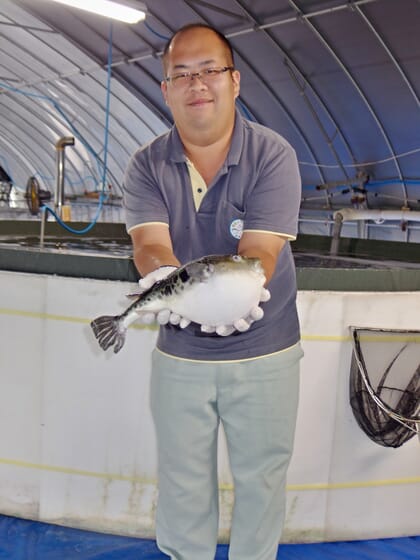
© Yumesozo
The highly toxic puffer fish, or fugu, is the most dangerous meal you can have in Japan. Chefs undergo strict training, followed by an extensive exam, before they are legally allowed to prepare the species.
The poison in puffer fish is a powerful neurotoxin called tetrodotoxin, which is thought to come from microorganisms and smaller sea life, such as shrimp and shellfish, that the fish ingests. It’s found in several of the fugu's organs, including the liver and gonads. As little as two milligrams is enough to kill an adult human. The key for chefs is making sure that poison from the organs doesn’t reach parts of the fish that are edible, such as the meat and fins.
While it may seem far too risky to eat puffer fish, what appeals to many people is the thrill of having what could be their last meal.
But is that thrill now disappearing? Thanks to advances in puffer fish research and farming, Japanese fisheries and university laboratories have started to cultivate a non-toxic version of the rare and expensive tiger puffer (Takifugu rubripes). Some farms rear the fish on a controlled diet that doesn’t contain the microorganisms and smaller species that puffer fish ingest at sea.
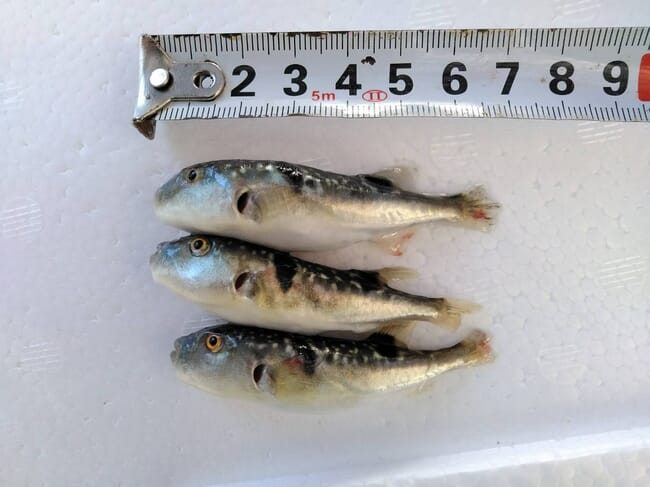
© Yumesozo
A farm with unique properties
Others, however, have different methods.
Yumesozo is located in the rural, mountainous town of Nasu-karasuyama, in Tochigi Prefecture, north of Tokyo. Late President Katsuaki Noguchi came up with the idea of farming puffer fish after he discovered springs of warm water in the mountains, around 500m below ground level. At about 20°C, the water is cooler than at most hot springs, with a salt content of 0.9 – 1.2 percent, or one third that of seawater. It also contains sodium and potassium, with no sulphur or other noxious minerals.
Noguchi zeroed in on these advantages and began a series of rearing experiments with filefish, sea bream, flatfish and tiger puffer. Although they all grew well, tiger puffer was chosen after profitability and species value were compared. Realising that saltwater fish could be cultivated in hot spring water, he contacted Professor Toyoji Kaneko, a fish physiology specialist who researches fish osmoregulation at the University of Tokyo’s Graduate School of Agricultural and Life Sciences.
“The hot spring water in Nasu-karasuyama has many benefits,” said Kaneko. “The natural habitat of tiger puffer is seawater, which has a salt concentration of around 3.5 percent. The fish has to reduce that salt density to around 0.9 percent by secreting salt through its gills. But because the salt concentration of the hot spring water is also around 0.9 percent, the fish can save energy as it doesn’t need to adjust the salt content in its body. Hot spring water also has very low pathogen levels, making it difficult for the fish to become ill.”
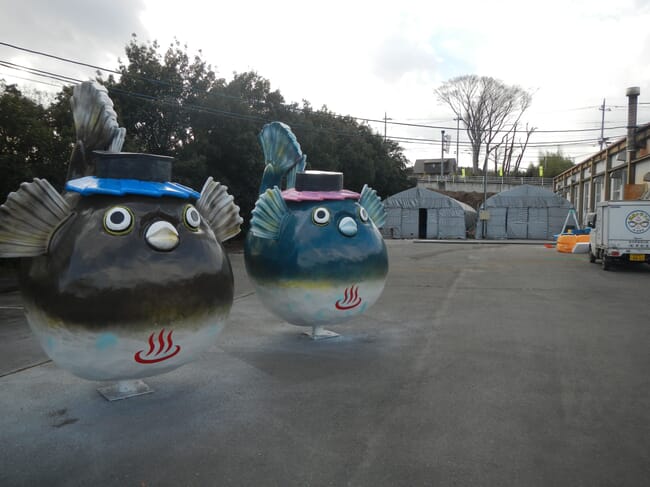
© Yumesozo
But how does the water ensure that Yumesozo’s fish aren’t toxic?
“Tetrodotoxin is not something that the fish produces,” said Kaneko. “It’s contained in things such as microorganisms [that the fish naturally eat in the sea] and accumulates in puffer fish, making them poisonous. If they are reared in water that isn’t seawater, such as hot spring water, they will definitely not accumulate tetrodotoxin.”
Because hot spring water is less dense than seawater, the taste of tiger puffer can become almost flavourless and the meat can be watery. In order to overcome these shortcomings, the fish undergo a process called seasoning before they are shipped. This involves transferring the fish from hot spring water to artificial seawater the day before shipment and killing them the following day by squeezing.
“When you transfer tiger puffer from hot spring water to seawater, the salt concentration in their blood – osmotic pressure – rises quite considerably but this is only temporary. When this happens, the amount of amino acid in the intracellular fluid of muscle cells also goes up, to balance out with the salt concentration in the blood. When that reaches a peak, by squeezing the fish to kill it, its taste becomes even stronger and more delicious. Through this, Yumesozo has turned a weakness into a strength,” said Kaneko.
Consumer buy-in
As Yumesozo continues its efforts to promote tiger puffer farming, it appears that more Japanese consumers are eating the farmed, non-toxic variety. Hiroki Meguro of Yumesozo believes that this trend will continue.
“Our puffer fish are reared on land. They are given artificial feed, no chemicals are used and the systems are closed off from the outer environment,” he says. “This enables the fish to be safe. These days, Japanese consumers want safe products and an increasing number are buying items such as pesticide-free vegetables or farmed fish. I can see more consumers eating non-toxic puffer fish in future.”
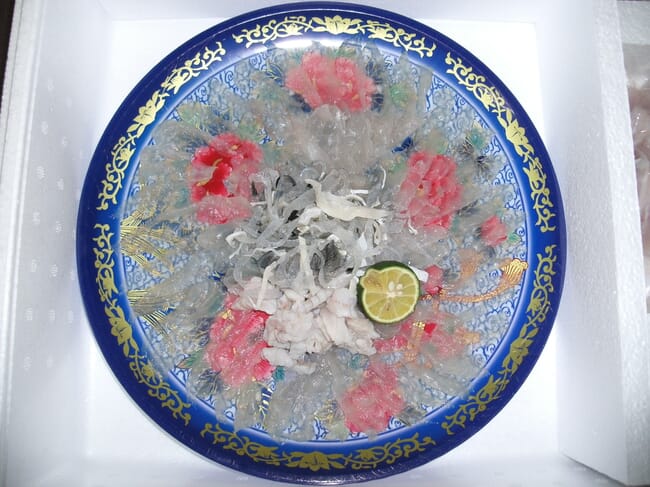
Farmed tiger puffer is perfectly safe for consumption, Meguro emphasises, and Yumesozo’s customers appear to agree. Thanks to the company’s efforts to improve the taste of the meat, its tiger puffer has proven popular, particularly in areas such as northeast Japan, where many people have never eaten puffer fish before. Japanese people also regard tiger puffer as a luxury item, which has helped boost sales. But when it comes to seafood, there is still a tendency to believe that wild is more delicious than farmed.
“It’s true that some people in Japan value the experience of eating tiger puffer from the wild in high-end restaurants,” said Meguro. “But as long as we continue our work to publicise our non-toxic, farmed version, I believe more people will opt to buy it.”
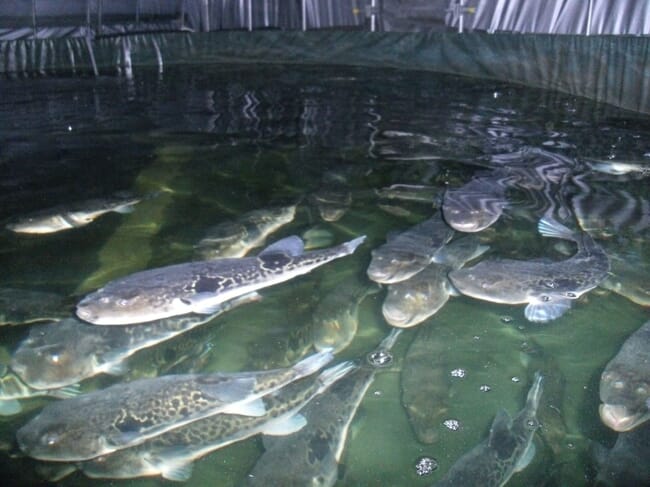
© Yumesozo
A change in regulations?
Tiger puffer meat may be popular, but will the development of farmed, non-toxic puffer fish eventually allow the fish’s organs to be consumed in future? Selling puffer fish organs is currently prohibited under Japan’s Food Sanitation Act, and although farms say their fish is safe to eat, some argue that it’s impossible to guarantee zero tetrodotoxin, even if it is from a fish farm.
“Requests have been made to approve the sale of puffer fish organs but they haven’t been successful,” said Kaneko. “Because people’s lives are involved, the government is extremely unlikely to change the law. Tiger puffer farmed in hot spring water, such as Yumesozo’s, is non-toxic but the law applies to them as well. Wild and farmed puffer fish could also get accidentally mixed up and there would be no way of telling them apart. It’s simply too risky.”
Kaneko says that, for now, many consumers are more than happy with tiger puffer meat, wild or farmed. Some may say that without the potential for death, eating puffer fish isn’t exciting, but it’s just such a deadly reputation, Kaneko argues, that makes people enjoy it all the more.



